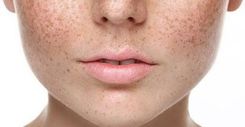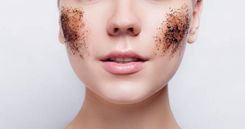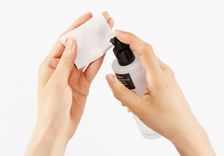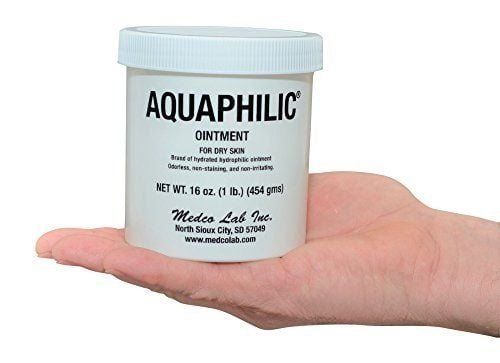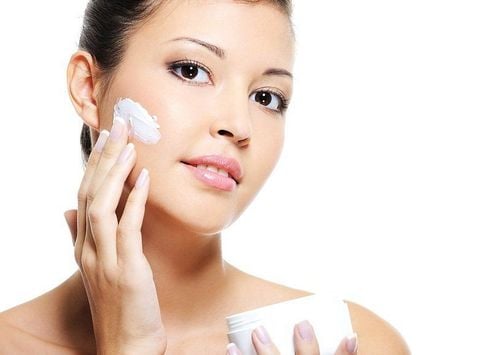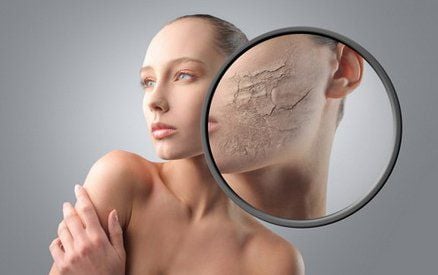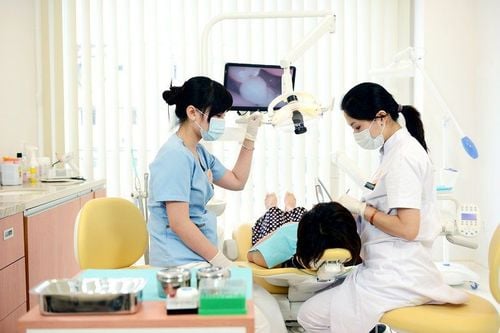This is an automatically translated article.
The skin is a very important organ, because it is the protective barrier between the body and the outside world. In particular, the pH affects the health status and functions of the skin. However, a number of factors can directly affect the pH of the skin, causing temporary changes in the pH value of the skin such as when washing your face, contacting water or other skin care products.
1. What is the pH?
The term pH is a number referred to when determining acidity or alkalinity on a scale of 0 to 14. PH refers to the activity of hydrogen ions, which are positively or negatively charged particles in stock solution of water. Where hydrogen makes up 2/3 of the water, water is two molecules of hydrogen plus one molecule of oxygen.
The pH of a solution is expressed on a number scale that runs from 0 to 14. Anything below 7 is considered acidic, while anything with a pH greater than 7 is considered alkaline. . Lemon juice with a pH of 2 is acidic, while ammonia with a pH of 12 is highly alkaline. It's important to know that while the difference between the pH numbers may be small by common sense, the pH scale is logarithmic not linear. That means a tenfold increase between successive pHs. This is why pH=3 is 100 times stronger than pH=5.
2. What is the pH of the skin?
Skin pH greatly affects the health and function of the skin. Human skin is naturally acidic on the surface, so it is compatible with acidic skin care products. Although, studies on the pH range of the skin surface give various numbers, but the research collected showed that the average pH of the skin is 4.7.
Men's skin tends to be more acidic than women's skin, although the pH of the skin increases with age, it is still acidic. When humans are born, our skin has a neutral pH that becomes acidic within the first few weeks after birth.
MORE: What is the pH of the skin and how much is normal?
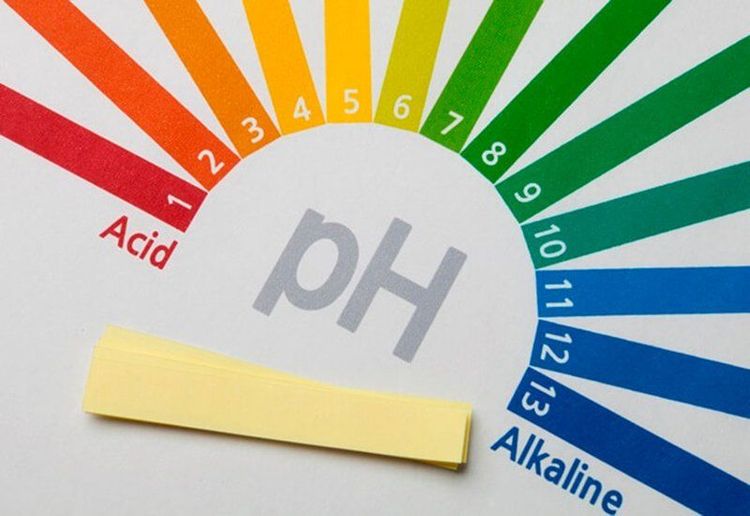
Làn da khi mới sinh có độ pH trung tính và trở nên có tính acid trong vòng vài tuần sau đó
3. What is the acid mantle of the skin?
Skin has a protective film on its surface, known as the acid mantle. The acid mantle plays an important role by working with natural skin ingredients like ceramides, cholesterol, enzymes, sweat and even the skin's own oils. The acid mantle protects the skin's surface and lower layers from external threats.
The acidic pH of the skin also plays a role in keeping the skin's delicate microbiome balanced. The acidic microbiome makes it more difficult for harmful pathogens to multiply, but allows beneficial microorganisms to thrive.
4. How does pH affect the skin?
If the skin's pH is disturbed, persistent, drastic changes can lead to or worsen many skin problems, including common skin disorders and a dry, tight feeling when washed with bar soap or water (most soaps are alkaline). To avoid these problems, many people look for pH-balanced skin care products, but not all products are labeled with their correct pH level. Cosmetic manufacturers understand how important the pH of skin care products affects the skin, so they often take steps according to the formula to ensure balance. So, choose pH-balanced cleansers and follow the procedure to get the most out of them.
If you are wondering what “pH balanced” means, it refers to products formulated with a pH that is within the range of normal, healthy skin. The pH range of 4-7 is most commonly applied in products. While it is true that some skin care products have pH numbers outside this range, in most cases this is not a cause for concern for skin problems. Research has shown that a slight disruption in the skin's pH level (such as from using a mineral sunscreen with a pH of 7.5 or an exfoliant containing an AHA or BHA with a pH of 3.6). ) is temporary. The skin will balance itself to its normal pH within an hour.
However, a study has shown that acidic products stimulate the skin to produce substances important for keeping the skin smooth, soft and hydrated. On the other hand, using products that are highly acidic (pH 2.5 or lower) or alkaline (pH 8 or higher) on a regular basis will cause a significant disruption in the skin's pH. As a result, the skin will take longer to return to normal. During this time, the skin is more susceptible to damage, as these factors can cause breakouts and signs of eczema, redness, and sensitivity. That's why daily use of products with too high or too low pH can clearly and gradually damage the skin.

Độ pH bị rối loạn khiến da dễ bị tổn thương và để lại nhiều hậu quả nghiêm trọng
5. pH of skin care products
Most skin care products are pH balanced, here are the common pH ranges for major skin care product categories such as:
Makeup remover: pH 4.5–7 Toner : pH 5–7 Sunscreen: pH 5–7.5 AHA and BHA Exfoliants: pH 3.2–3.9, with any value between 3 and 4 considered most effective Cream moisturizer : pH 5–7 Serum: pH 4–6 Vitamin C products (ascorbic acid): pH 2.6–3.2 Retinol products : pH 3.7–5 Various skin care products have different pH but used in a skin care routine. Many people are concerned that doing so will render one or both products inactive because the different pH levels conflict with each other. As a result, they often wait 20 minutes or more before applying another skin care product. However, you can apply other products right after that without having to wait. Because, once the pH range of a water-based product is established, it will stay within that range even when applied at the same time as products that are outside that pH range. The ingredients that chemists use to establish the pH range found in skin care products are strong enough to keep it within the desired range when combined with a variety of products.
It is much easier to change the pH of the skin than it is to change the skin care products. To balance the pH of a product out of its range or dramatically change the pH of other products, you need to add more water (which means adding more hydrogen ions to the solution), heat and time. The pH of the product may change as the temperature changes. As the temperature increases, the water in the solution produces more hydrogen molecules. Surprisingly, a large increase in temperature did not change the pH that much. For example, the pH of water at 77 degrees F is 7 (neutral) and when the temperature rises to 122 degrees F (rare in many parts of the world) the pH drops to 6.6, which is not a large drop which is an example of extreme heat. Under normal conditions of use, chemically a product with a higher pH cannot make a product with a lower pH ineffective, and the reverse is also true. You can reap the benefits of all these ingredients without having to adjust your routine.
Recently, there is concern that washing with ordinary tap water can disrupt the pH of the skin, you should wash with carbonated water instead. The problem is that tap water has a pH of 7 and is considered too high for a skin pH of 5.5 to 4.5. It is claimed that, since carbonated water has a pH of 5.5, it is more compatible with the skin. However, this is not true because most carbonated water does not have a pH of 5.5. It has a pH of 3 to 4 instead, but when carbonated water has a pH of 5.5, this is still higher than the natural pH of most people's skin's surface. Besides, the neutral pH of 7 found in tap water has less effect on the natural pH of the skin than any other pH number. So, you can wash your face with tap water without affecting the pH of your skin.
In short, the pH of the skin is very important that directly affects the health and function of the skin. Therefore, in the process of skin care, you need to pay attention to pH balance by choosing products and implementing the right skin care process to have a healthy skin.
Please dial HOTLINE for more information or register for an appointment HERE. Download MyVinmec app to make appointments faster and to manage your bookings easily.
Reference source: paulaschoice.com
